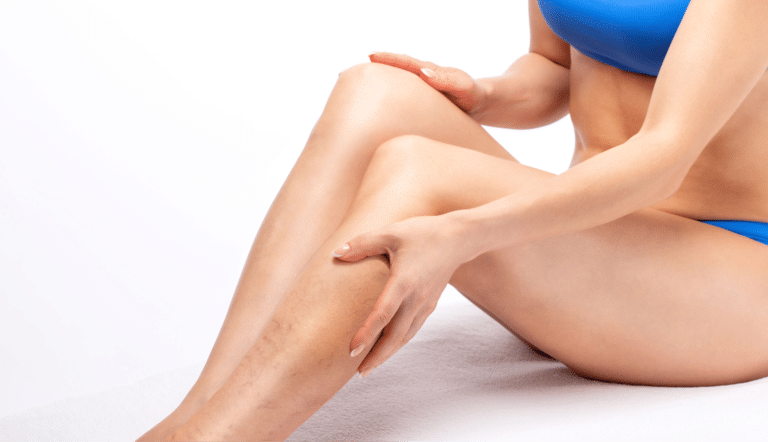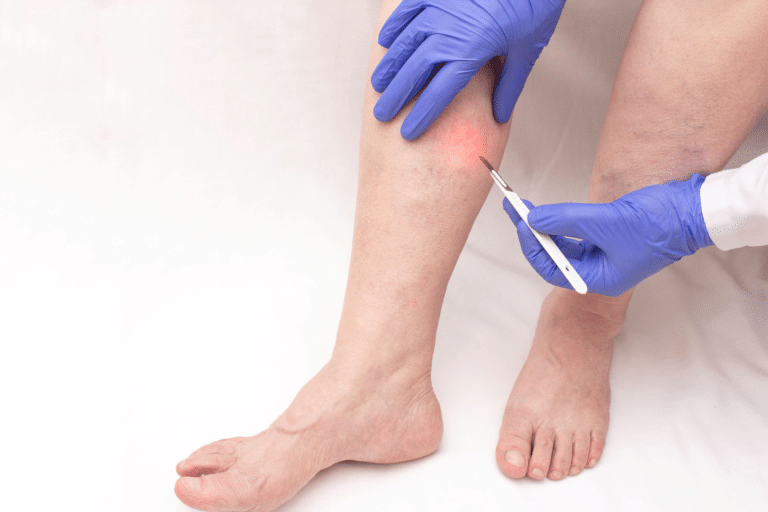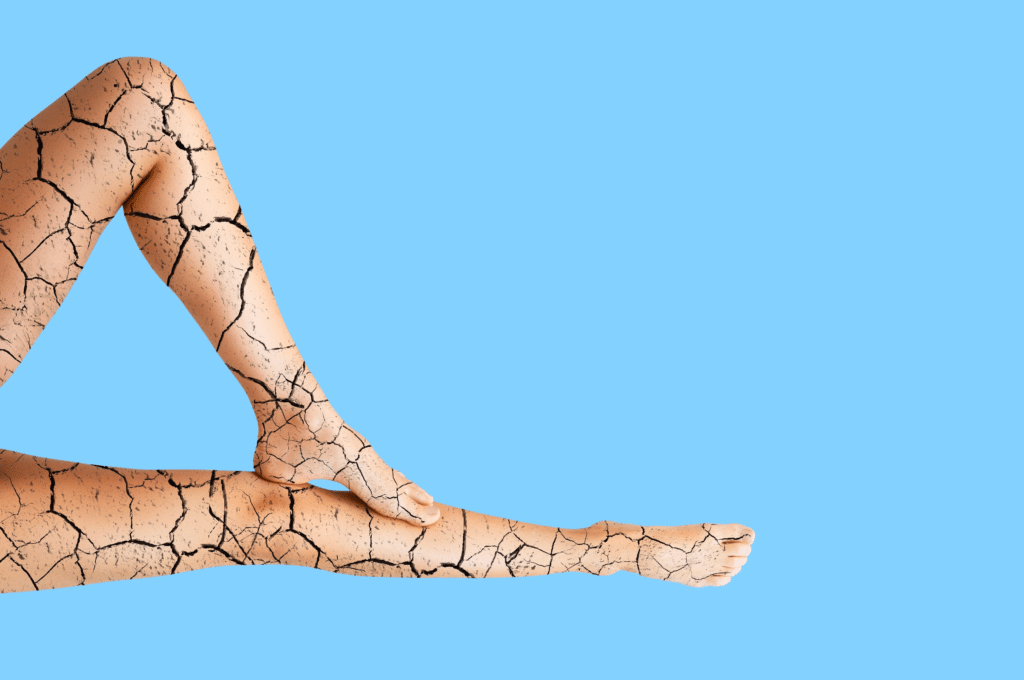Sclerotherapy is a medical procedure used to treat various vein-related conditions, such as varicose veins, spider veins, and venous insufficiency. It has been used to treat these conditions since the 1930s and is one of the most commonly used treatments for vein health. The procedure involves injecting a solution into the affected veins, which causes them to shrink and eventually fade away. The solution also helps to reduce swelling and pain associated with the condition. Sclerotherapy is a safe and effective treatment that can relieve uncomfortable and unsightly vein-related conditions. Furthermore, the procedure requires no downtime, can be done in the doctor’s office and is cost-effective compared to other vein treatments. With the help of sclerotherapy, many individuals can experience improved vein health and quality of life.
What are spider veins, and why are they a problem?
Spider veins, also known as telangiectasia, are a type of vein visible on the skin’s surface. They are usually small and red and may resemble a spider’s web or branches of a tree. They are usually found on the face and legs but may appear on other body parts. They are most commonly caused by dilated perforating veins, which are large, twisted veins that become swollen and are located below the surface of the skin and give off branches also called feeder veins, just under the spider veins. Varicose veins are caused by a combination of heredity, aging, and a person’s lifestyle. They are more common in women but can affect anyone. Excessive standing, lifting, and sitting for long periods can also increase your risk of developing spider veins. Spider veins are not usually painful, but they can cause discomfort and be a sign of other painful conditions, such as venous insufficiency. They can also make you self-conscious and negatively impact your quality of life.

How does sclerotherapy work?
During sclerotherapy, the doctor will inject a solution into the affected veins. The goal of the solution is to shrink the veins and cause them to collapse. The veins are gradually reabsorbed into the body over months, which causes them to fade away completely. The solution may contain various ingredients, including saline solution, an anesthetic, a detergent, a clotting agent, a vasoconstrictor, and a sclerosant. The saline solution is used to deliver the other ingredients to the veins. Blood clotting agents are used to stop the bleeding from the puncture wounds caused during the procedure. The coagulant is designed to seal puncture wounds and prevent the solution from escaping the vein. The vasoconstrictor is used to shrink and narrow the veins. The sclerosant is designed to cause inflammation at the site of the veins. This inflammation causes the veins to harden and shrink.
What are the benefits of sclerotherapy?
Sclerotherapy is a safe, effective, and cost-efficient procedure that can provide long-term relief from various vein-related conditions. Safe and Effective – Sclerotherapy has been used to treat vein conditions for over 80 years. It is proven safe and effective, even in the long term. Cost-Efficient – Sclerotherapy can be cheaper than other treatments, such as laser therapy because it does not require expensive equipment. No Downtime – There is no downtime associated with sclerotherapy. You can return to work and your usual activities right away. Can Treat Multiple Vein Conditions – Sclerotherapy can be used to treat a variety of vein conditions, including spider veins, varicose veins, and venous insufficiency.
What should you expect during a sclerotherapy treatment?
Your doctor will likely perform the procedure in their office. You may be asked to lie on a table. Your doctor may use a special device to apply pressure to the area to help with any discomfort caused by the injection. The doctor will inject the solution into the affected veins using a needle. The process is quick and does not cause any pain. After the procedure, you may experience some mild discomfort for a few hours. You can take prescribed medications to ease any discomfort. Certain factors may increase the risk of side effects associated with sclerotherapy. These include having an existing medical condition, such as diabetes, having a family history of blood clots, or being overweight. Your doctor will discuss the risks of sclerotherapy with you and determine if the procedure is right for you.

Who is a good candidate for sclerotherapy?
Anyone who suffers from painful, unsightly spider veins may be a good candidate for sclerotherapy. The procedure is safe and effective for treating a variety of vein conditions. Some common conditions that sclerotherapy can treat include spider veins, varicose veins, and venous insufficiency. You may also be a good candidate for sclerotherapy if you have been diagnosed with the condition that is worsened by excess blood in the veins, such as lymphedema, hemangioma, or cellulitis. Your doctor will determine whether sclerotherapy is right for you.
What are the potential risks of sclerotherapy?
Sclerotherapy is a safe procedure that does not cause long-term or serious side effects. You may experience some mild side effects for a few hours after the procedure, and your doctor may provide you with prescription medications to manage these side effects. The risk of side effects increases depending on your existing medical conditions, especially conditions that lead to blood clots, such as diabetes. Your doctor will perform a thorough examination and assess your overall health and lifestyle before determining whether sclerotherapy is right for you. The risk of side effects may increase if certain conditions are not met during the procedure. For example, if the needle is not inserted into the vein correctly, it may lead to puncture wounds or blood clots. In rare cases, the sclerotherapy solution may leak into surrounding tissue and cause inflammation. Your doctor will follow the proper procedures to minimize the risk of side effects.
What are the results of sclerotherapy?
Sclerotherapy is effective for treating a variety of vein conditions. It can shrink the affected veins and reduce their appearance. In some cases, it can eliminate the veins. Sclerotherapy can reduce the appearance of spider and varicose veins in about 80% of patients. Furthermore, it can reduce the risk of complications associated with varicose veins and improve venous insufficiency by 50%. Sclerotherapy is most effective when performed on the first signs of vein disease. It is less effective in patients with more severe varicose veins.
How much does sclerotherapy cost?
The cost of sclerotherapy depends on factors such as your health insurance plan, the severity of your condition, and the doctor you choose to perform the procedure. Health insurance plans often cover sclerotherapy. However, the costs associated with the procedure may be applied to your deductible or co-pay. You may also find sclerotherapy treatment from a vein specialist who offers discounted rates. You can ask your doctor or insurance provider for suggestions. You can save money by comparing the costs of different doctors. You can also save money by making lifestyle changes that can reduce the risk of developing vein conditions, such as exercising regularly and changing your work environment to reduce the risk of varicose veins.
Conclusion
Spider veins are a common condition that can be treated with sclerotherapy. The procedure shrinks and collapses the affected veins and can provide long-term relief from painful and unsightly vein conditions. Sclerotherapy is a safe and effective procedure that can be performed in the doctor’s office and does not require downtime. With the help of sclerotherapy, many individuals can experience improved vein health and quality of life. Contact us today!

